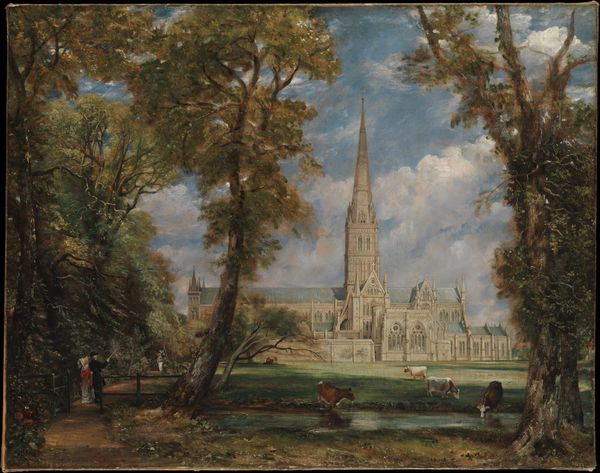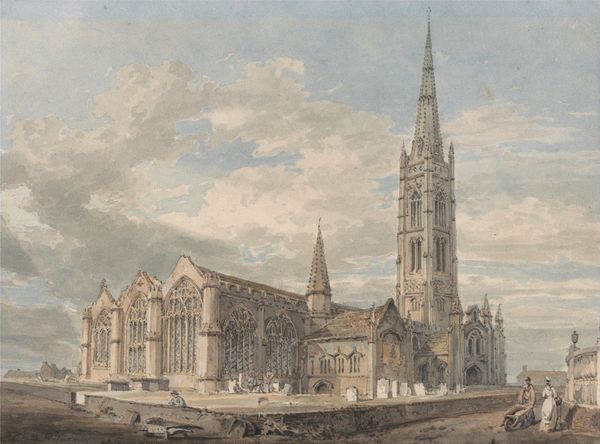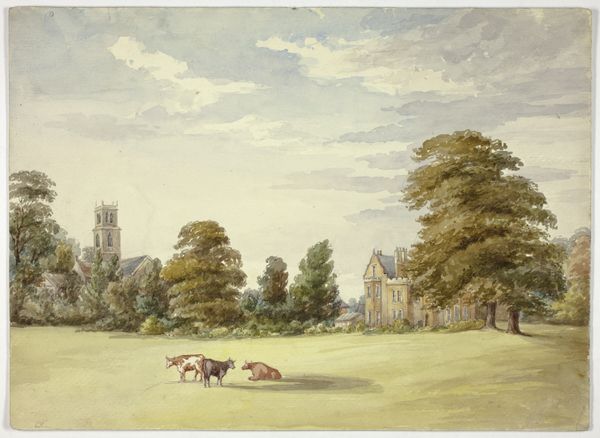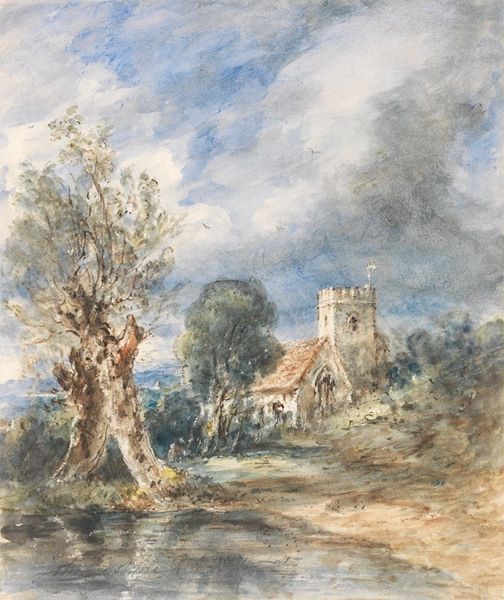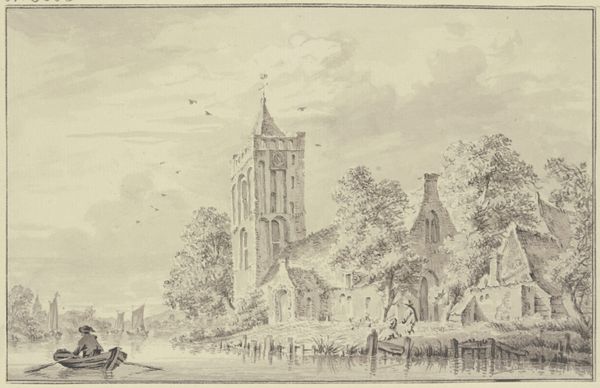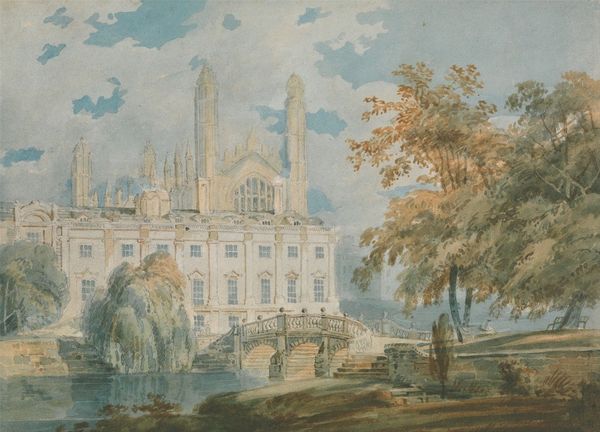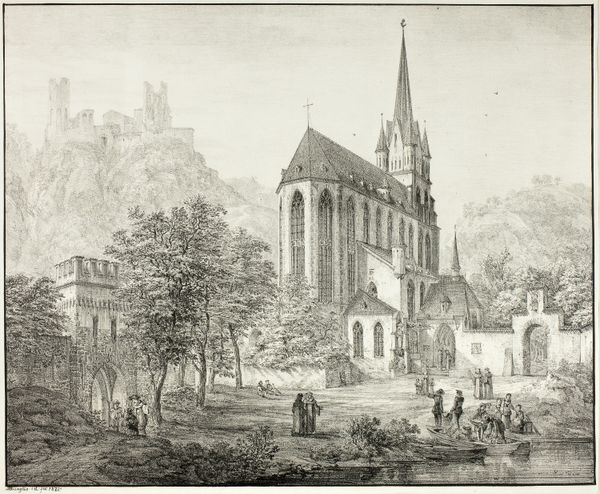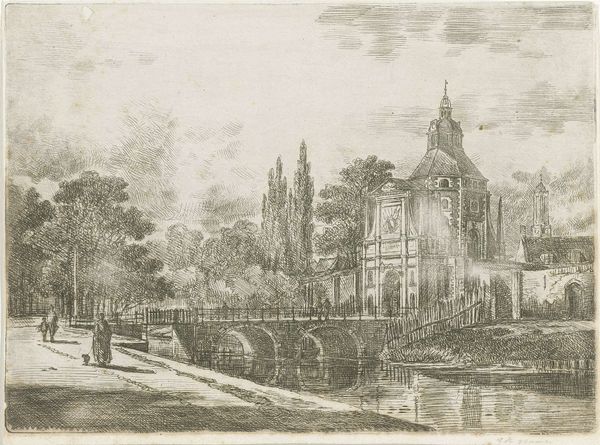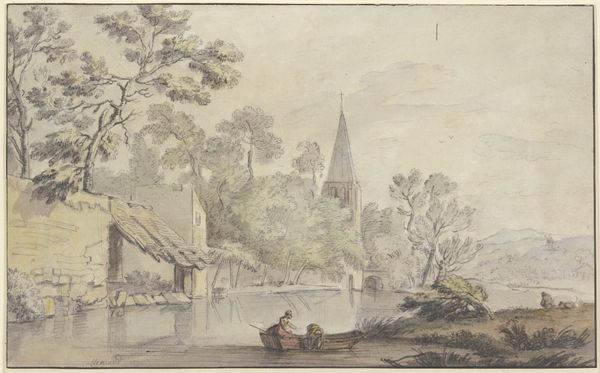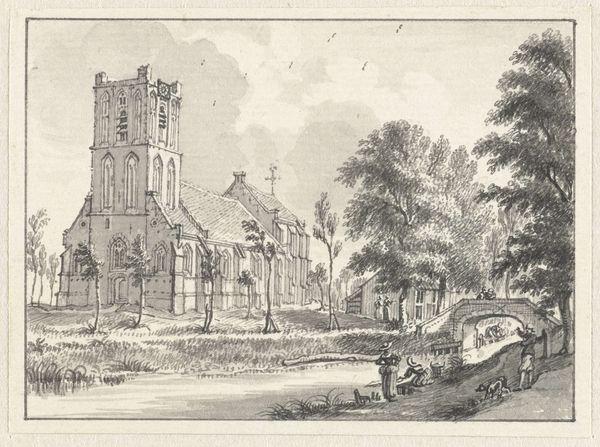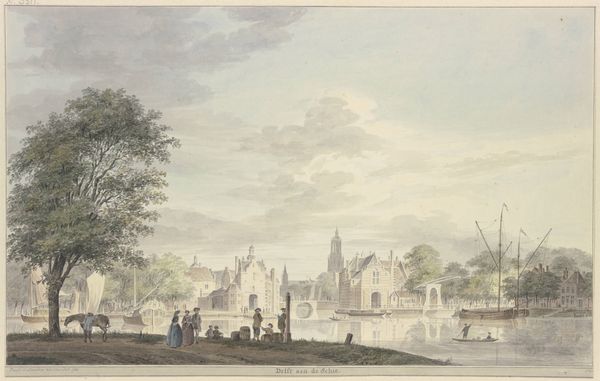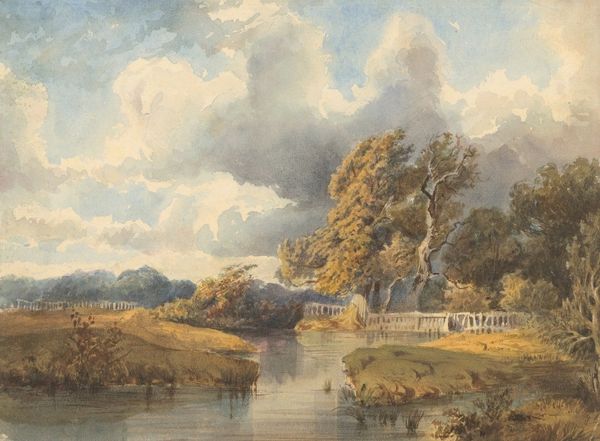
View of Salisbury Cathedral from the Bishop's Grounds 1823
0:00
0:00
painting, plein-air, oil-paint
#
tree
#
painting
#
plein-air
#
oil-paint
#
landscape
#
figuration
#
oil painting
#
romanticism
#
natural-landscape
#
history-painting
#
watercolor
#
realism
Dimensions: 88 x 112 cm
Copyright: Public domain
Editor: This is John Constable’s "View of Salisbury Cathedral from the Bishop’s Grounds," painted in 1823 using oil paint. It’s quite serene, almost idyllic. The towering cathedral is framed by lush trees. What strikes you most when you look at it? Curator: The spire. The cathedral’s spire pierces the sky. The spire is an enduring symbol, it signifies an aspiration, reaching for something beyond earthly constraints. But its context is equally important, isn’t it? Editor: How so? Curator: Observe how the towering cathedral is softened by the natural landscape around it. What emotions are evoked by the positioning and juxtaposition of nature and cathedral? Editor: Well, the cathedral represents established order, and it's an imposition on the landscape, yet it also lives alongside nature... Do you think Constable was commenting on the Church's place in society, maybe? Curator: Precisely. The Church has a legacy, yet it continues, perhaps adapts. And the muted storm clouds behind it might signify upcoming storms or upheavals. Remember that the Reformation violently upset the place of religion and society in Europe. Editor: So the enduring spire amidst change symbolizes resilience but also maybe an unacknowledged trauma? Curator: Exactly. It evokes reflection on permanence and the cultural weight of historical shifts, like how memory itself works. The eye sees it from a particular view in time, doesn’t it? What will remain of our institutions, our cultural memories? Editor: That's fascinating! I initially saw a pretty landscape, but it’s full of complex commentary and lingering, centuries-old cultural baggage! Thanks for opening my eyes.
Comments
No comments
Be the first to comment and join the conversation on the ultimate creative platform.
